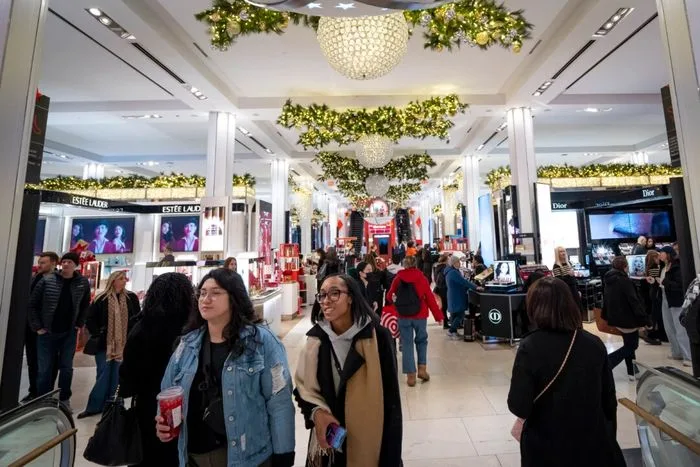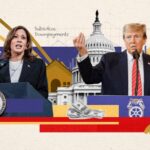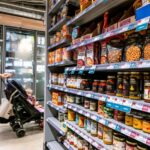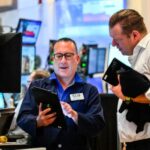By Andrew Moran
Americans plan to put more U.S.-made products under the Christmas tree this year, new research shows.
Thirty-three percent of shoppers say they are more likely to prioritize purchasing products made in the United States this holiday season, according to global research data and analytics group YouGov.
By comparison, just 10 percent of respondents said they are less likely to buy U.S.-made products.
“Shoppers are signaling they want to buy earlier, spend less, and shop with values in mind,” Ashley Brown, senior director of account management at YouGov, said in the “Black Friday & Cyber Monday 2025” report.
The research also found that 32 percent of respondents say tariffs will cause them to spend less this year, while almost a quarter (22 percent) want to start their holiday shopping earlier than usual.
President Donald Trump’s global sectoral and reciprocal tariffs, as well as potential price pressures, are expected to have at least a minor effect in the U.S. marketplace during this year’s holiday season.
The Mastercard Economics Institute released its annual holiday forecast on Sept. 22. The report forecasts a 3.6 percent year-over-year increase in total U.S. retail sales, excluding automobiles, from Nov. 1 to Dec. 24.
Online shopping is expected to surpass brick-and-mortar sales, says Vicki Hyman, director of global communications at Mastercard. Online sales growth is forecast to increase by 7.9 percent year over year, while physical store sales are projected to rise by 2.3 percent.
While inflation may be a factor this year, the impact of tariffs remains uncertain, Hyman noted.
“Inflation is expected to be a larger contributor to sales growth, as opposed to actual sales volume compared to last year, and the impact of tariffs on consumer prices is not yet clear,” Hyman said. “Some retailers betting on sales volume may choose to eat the tariff increases, but there are signs that others will be passing them along.”
Current Inflation Conditions
The latest batch of inflation data suggests that the president’s global levies have yet to have a material impact on consumer prices at an aggregate level.
The Federal Reserve’s preferred inflation measure—the Personal Consumption Expenditure (PCE) price index—ticked up to 2.7 percent in August from 2.6 percent in the previous month.
Speaking to reporters at this month’s post-meeting press conference, Fed Chair Jerome Powell stated that tariffs are being primarily absorbed by “companies that sit between the exporter and the consumer.”
“All of those companies and entities in the middle, they’ll tell you that they have every intention of passing that through in time, but they’re not doing that now,” Powell said.
According to a report compiled by Duke University and the Richmond Fed, CFOs estimate that their costs will increase by an average of 4.4 percent next year, with tariffs being the primary culprit.
Trade and tariffs were the most pressing concerns for surveyed firms, the report found.
The Fed’s Beige Book—a periodic report summarizing economic conditions across the central bank’s 12 districts—suggested that some firms were reluctant to raise their prices, “citing customer price sensitivity, lack of pricing power, and fear of losing business.”
“Most Districts reported that their firms were expecting price increases to continue in the months ahead, with three of those Districts noting that the pace of price increases was expected to rise further,” the report stated.
While scores of major retailers have announced plans to raise their prices amid levies, many companies rushed to build their inventories at the start of the year ahead of the president’s tariffs. This has allowed businesses to refrain from dramatically hiking their prices for shoppers, especially during key shopping events during the year.

A recent paper by university economists, titled “Tracking the Short-Run Price Impact of U.S. Tariffs,” found that prices for imported goods have risen by about 4 percent since March.
“Goods prices have risen in response to tariff announcements—although the increase has been modest compared to announced tariff rates,” the paper stated.
According to the Bureau of Labor Statistics, import prices rose 0.3 percent in August, higher than the market consensus of a 0.1 percent decline.
First Stop: Halloween
Before households and stores light up their Christmas trees, the first holiday-related stop will be Halloween.
New National Retail Federation research found that Halloween spending is projected to exceed $13 billion this year, up from $11.6 billion last year.
A majority—79 percent—of Halloween shoppers expect prices will be higher this year because of tariffs, the survey found.
“Even with concerns about price increases due to tariffs, Halloween continues to resonate with consumers of all ages,” said Katherine Cullen, the group’s vice president of industry and insights, in a statement.






